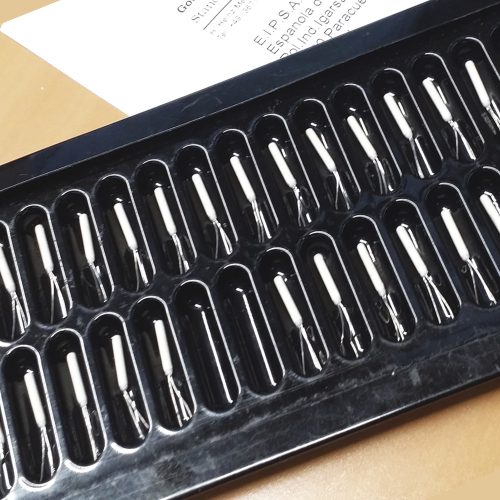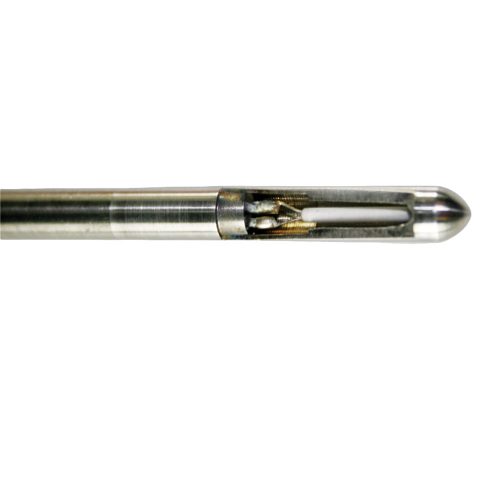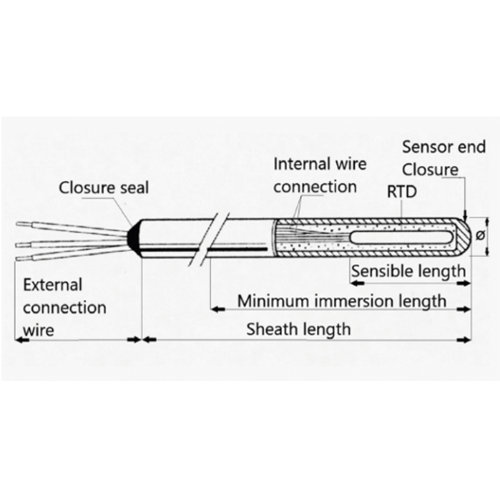Inicio > PRODUCTS > Temperature > Resistance thermometer
TEMPERATURE
Resistance thermometer
DESCRIPTION: The Resistance thermometer is a widely used element due to its simplicity and precision, consisting of a metal sensor (platinum, copper or nickel), whose resistance varies with temperature, and extension cables, being the whole set protected by a metal sheath. The resistance thermometer generally used are PT-100 type of platinum winding on a ceramic basis.
Temperature sensor element by electromotive force.
Manufactured using high performance sensors and extension cables insulated in magnesium oxide (MgO) extruded together with its metal sheath.
- Rules of design: IEC 60751, ASTM E780, ASTM E1137, ATEX, IECEx.
- Materials: Demand.
- Sizes of manufacuring:
- Ø sheath: 3 – 8mm.
- Standard and special sheath thickness.
- Cable gauges drivers according to AWG.
- Other sizes to consult.
- Nuclear industry.
- Chemical and petrochemical industry.
- Aeronautical and aerospace industry.
- Areas classified ATEX 2014/34/EU and IECEx with explosion-proof protection and intrinsic safety.
- Renewable Energy Industry
– Calibrations performed by both laboratories externally and internally in our Calibration laboratory.
– ATEX 2014/34/EU and IECEx certification for the complete set consisting of connection head with ceramic terminal block or Temperature transmitter, sensor element (Thermo-couple/ RTD), joining accessories and external protection sheath for process connection (with or without flange).
Common types

Specifications:
Resistance thermometer are generally manufactured with PT -100 type bulbs of platinumwinding encapsulated in ceramic base, which offer greater performance than the stratifiedor film types that do not with stand high temperatures.
Resistance thermometer are distinguished by their tolerances of measurement precision, as well as by the temperature range of use, being able to be single or double to 3 wires, 4 threads, 6 threads.
In the manufacturing process, special executions have been developed to make these sensors resistant to vibrations.
Precision:
This depends on both the type of resistance used, as well as the operating temperature. The following table summarizes the main ones.

IEC 60751 STANDARD









